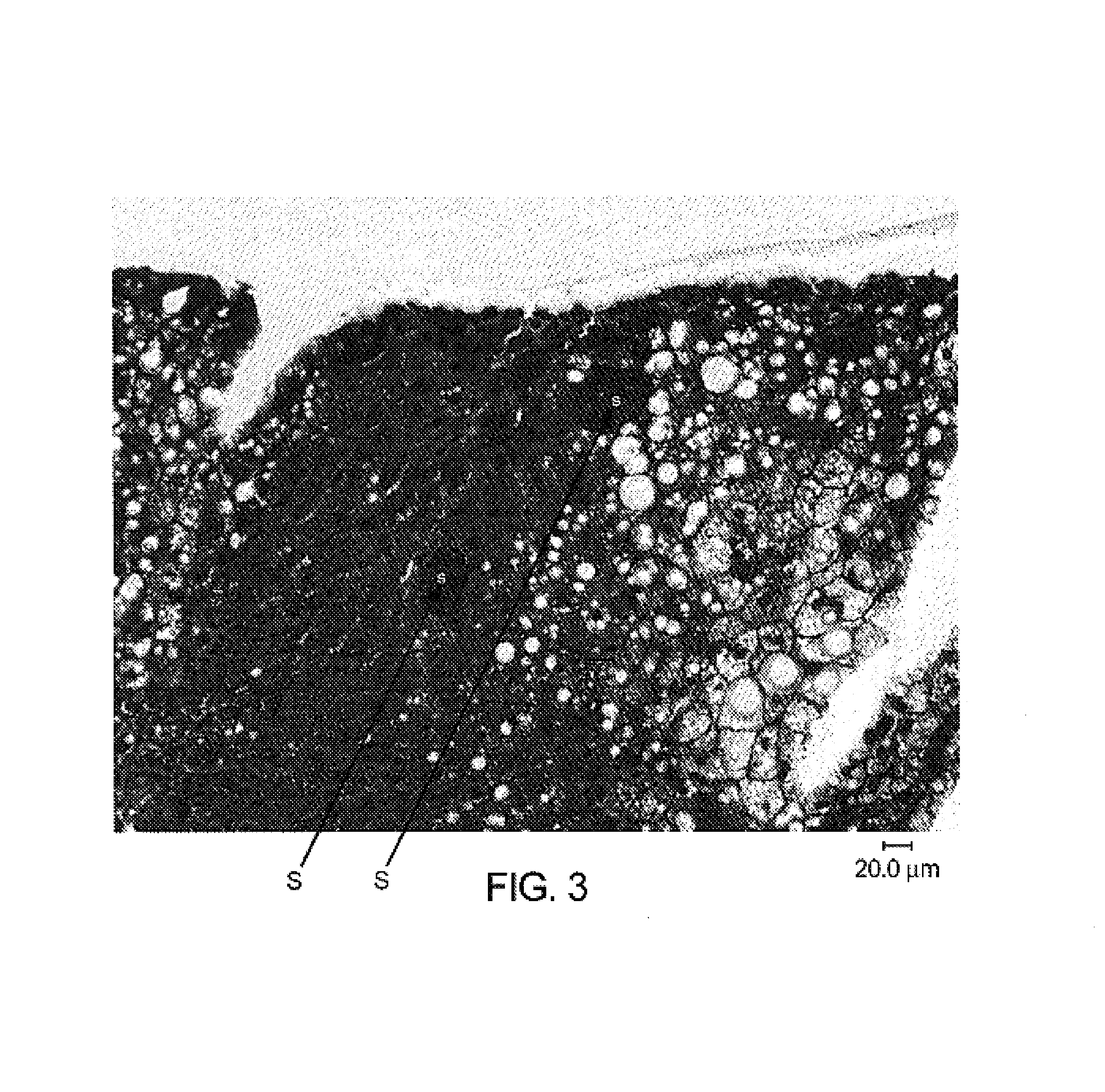Malarial animal model having a chimeric human liver
a human liver and animal model technology, applied in the field of mammals, can solve the problems of difficult work of human cell lines, difficult to obtain biological materials containing ee forms of i>p. falciparum/i, and less attractive approaches
- Summary
- Abstract
- Description
- Claims
- Application Information
AI Technical Summary
Benefits of technology
Problems solved by technology
Method used
Image
Examples
example 1
A Small Animal (Mouse) Model of Plasmodium Malaria Liver Stage Infection
[0119]Plasmodium malaria is the predominant causative agent of the parasitic human disease malaria that infects an estimated 300 million people yearly and is responsible for millions of deaths per year. Development of newer and more effective anti malarial agents, preventive therapies and vaccines has been hampered by the limited animal models available for study of this form of malaria, especially of the obligate hepatic stage of malaria development. While mouse forms of malaria exist, P. falciparum malaria schizonts (liver stage infection) develop only in hepatocytes of human or some non-human primates. The invention provides a mouse model that yields a liver composed of a substantial proportion of human hepatocytes and is capable of supporting infection, growth and development of plasmodium parasites through the obligate liver stage.
[0120]SCID mice were crossed to mice with a urokinase type plasminogen activa...
example 2
Confirmation of Plasmodium Falciparum Malaria Hepatic Stage
Infection—Schizonts in Human Liver Cells in Chimeric Mice
[0123]Multiple confirmatory readouts were obtained to confirm Plasmodium falciparum liver stage infection.
[0124]Immunohistochemistry
[0125]Immunohistochemistry with antibodies specific for malarial antigens confirmed the presence of malarial schizonts from liver tissues recovered from mice on days 4, 5, 6 and 7 post inoculation. Malarial antigens confirmed in liver sections from 3 mice sacrificed at 6 days (hAAT 900), 6 days (hAAT 300), 5 days (hAAT 300) include:[0126]1) a malarial heat shock protein (HSP) specific for liver stage infection with plasmodium malaria[0127]2) LSA-1: a liver stage specific antigen (identified from a parasite DNA expression library by screening with sera from patients repeatedly bitten by infected mosquitoes while the patients were taking chloroquine prophylaxis)[0128]3) EXP-1: a liver and blood stage antigen[0129]4) AMA-1: an antigen present...
example 3
Detection of Change in Life Stage of Malarial Parasites in the Mouse Model
[0153]The malaria-infected animal model was examined to detect the various stages of the malarial parasite, thereby showing that the malarial parasites exhibit the natural life cycle in the mouse model.
[0154]Development of Schizonts from Sporozoites in the Liver of Chimeric Mice
[0155]Immunohistochemistry and PCR for antigens and mRNA specific for life stages characteristic of delivery of infection by mosquito bite (sporozoite) and subsequent liver stage infection (schizonts) have confirmed that life stage development and change occurs in the chimeric mouse model of plasmodium malaria infection.
[0156]Immunofluorescence assays were carried out following standard protocols. Briefly, Liver tissue, frozen in OCT, was cut into 5 μm sections and placed onto glass slides. The tissue sections were fixed in ice-cold absolute methanol for 5 min. and air-dried. Sections were blocked with 3% normal goat serum and incubated...
PUM
| Property | Measurement | Unit |
|---|---|---|
| time | aaaaa | aaaaa |
| pH | aaaaa | aaaaa |
| v/v | aaaaa | aaaaa |
Abstract
Description
Claims
Application Information
 Login to View More
Login to View More - R&D
- Intellectual Property
- Life Sciences
- Materials
- Tech Scout
- Unparalleled Data Quality
- Higher Quality Content
- 60% Fewer Hallucinations
Browse by: Latest US Patents, China's latest patents, Technical Efficacy Thesaurus, Application Domain, Technology Topic, Popular Technical Reports.
© 2025 PatSnap. All rights reserved.Legal|Privacy policy|Modern Slavery Act Transparency Statement|Sitemap|About US| Contact US: help@patsnap.com



